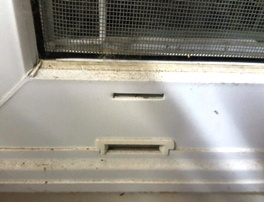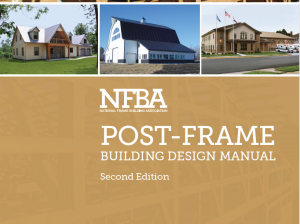The vinyl windows for your new pole building are delivered and upon inspecting them you find small square holes on the exterior frames of them.
While the first thought may be, “Won’t those little holes let cold air in (or warm air out), the reality is these are the window’s weep holes. They are designed and placed to drain water out of the window frame, while preventing airflow into your new pole building.
As a college sophomore, at Bozeman’s Montana State University, I took Professor Denny Lee’s Physics class. Now Denny was quite the showman. On the first day of class – in a huge lecture hall filled with hundreds of eager students, he offered an A in the class to anyone who could explain how gravity works.
Hands popped up everywhere, answers and theories were flowing like hot air balloons in Albuquerque – and Denny shot them all down.
After we all gave up, Denny gave us the answer, “The Earth sucks”.
Well gravity (the Earth sucking) causes water to flow downhill. Most vinyl windows are manufactured from the same extrusion on all four sides (extrusion being the technical name for the lineal vinyl piece which is cut into sections and welded together to make the window frame.
 So how is it the windows need weep holes?
So how is it the windows need weep holes?
The sill is the exact same-shaped extrusion as the jambs, which means the window tracks which hold the sash when in the vertical position of the frame will collect and hold water when functioning as the sill in the bottom horizontal position of the frame. Weep holes allow this water to drain.
So, if there are holes to drain the water out, won’t they also allow wind to come in?
Vinyl window manufacturers have anticipated these concerns and have solved the problem in a variety of ways:
Little doors or flaps are inserted to cover the weep holes. They open outward when water is exiting the window and close to prevent wind pushing against them to get into the window.
The extrusions are filled with a network of compartments designed primarily to give added strength to the frame, but these chambers also act as baffles against the incoming air, preventing it from entering your pole building.
And last, but not least, the exterior weep holes which drain the water out of the window are not aligned with the interior weep holes; thus, they block direct air flow into the window.
Most horizontal sliding windows have weep holes, as do most single or double hung windows. Weep holes on sliding windows can be seen in the sill track. They are under both the sliding and operating sash, as well as the screen. Vinyl patio doors may have weep holes also; some are on both the top and bottom, but this is only so the door can be rotated during installation to reverse its operation.
Care is necessary to assure access to weep holes is kept clear. No caulking or exterior sidings should be allowed to cover the holes. The opening should always be kept clean.
Check regularly for dirt, dead bugs, leaves and pine needles which can block drainage. Remove debris promptly to prevent water from backing up into your pole building and causing damage.
Keeping vinyl window weep holes clean means never having to shed a tear about water or wind infiltrating through vinyl window frames.







